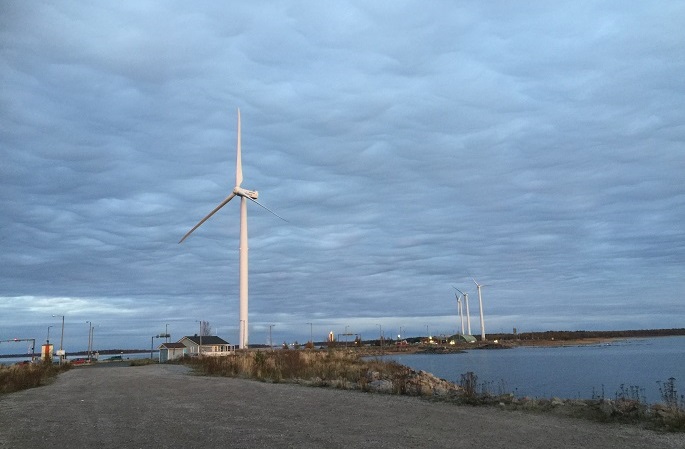Wind turbine impacts on birds, mammal population negatively
Published : 19 Dec 2023, 01:41
Updated : 19 Dec 2023, 01:44
Many bird and mammal groups avoid wind power and the full or partial displacement of individuals from the wind turbine area may reduce population sizes, according to the international review of the Natural Resources Institute Finland (Luke).
The reduction of the population sizes will especially have an adverse impact on rare and threatened species, said Luke in a press release on Monday referring to the review.
While wind power is an important part of the green transition, its downsides include the disturbances caused by wind turbines in animal habitats, said the review.
Luke’s researcher group compiled 84 studies from 22 countries to identify 160 cases with information about the distance how far wind turbines affect different groups of birds and mammals.
Effects identified in the studies included decreases in population sizes and offspring production, changes in birds’ mating behaviour, and increases in offspring mortality.
“If any of these effects were identified near wind turbines, they were addressed as displacement. Correspondingly, cases in which these effects were not identified were regarded as non-displacement,” said Anne Tolvanen, Professor at Luke, who led the review.
In the studied cases, 63% of birds, 72% of bats and 67% of terrestrial mammals showed displacement from wind turbine areas.
Common cranes (3 displacements per 3 studied cases), owls (2/2) and reindeer (6/6) were displaced the most consistently. On average, they were displaced 5 km from wind turbines.
For gallinaceous birds, the impact extended to a distance of 5 km on average, but only in 11 of the 18 studied cases.
For bats, the impact extended to a distance of 1 km on average (21/29).
Furthermore, the impact extended to a distance of 500 m for waterfowl (6/7), raptors (24/30), passerines (16/32) and waders (8/19).
The reasons assessed in the studies for non-displacement were also compiled. An incomplete methodology, which made it more difficult to identify any displacement, was reported most commonly. This might have involved too short a monitoring period or an insufficient number of observation points.
Reasons for non-displacement also included individual or species-specific traits, including young age and natural preferences of open environments to have access to nutrition or avoid predators. The third reason for any non-displacement concerned resources available in the surroundings of wind turbines, including grit as nest material for waterfowl and for digestion for gallinaceous birds.
“It should be noted that the effects and distances showed significant variation even inside a single species, depending on the individual’s age and gender, the monitoring period and the study methodology used. For example, passerines could become accustomed to wind turbines, and any displacement identified early could decrease over time. What is more, individuals of the same species, such as many bats, could both avoid wind turbines and gather around them. Access to nutrition was regarded as one reason for this,” Tolvanen said.
Tolvanen encouraged the recent review to be used in planning wind turbine locations to minimise any adverse impact on nature and habitats.
More Finnish research data will be produced in the WINDLIFE project which was started in 2023 to study the impact of wind power on three species under the Habitats Directive: wolf, Finnish forest reindeer and golden eagle.
“The five-year project starts from gaps in information related to strictly protected species under the Habitats Directive. It will especially provide information for environmental impact assessments in Finland’s conditions. In addition, different countries have different practices for reindeer husbandry, which is why this new study, partly funded by wind power companies, will also investigate the impact of wind power on it,” said Ari Nikula, Senior Scientist at Luke, who leads the study.


